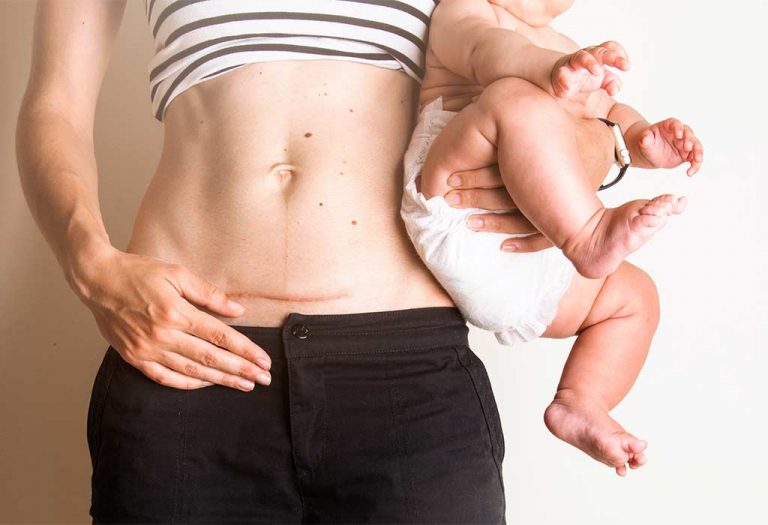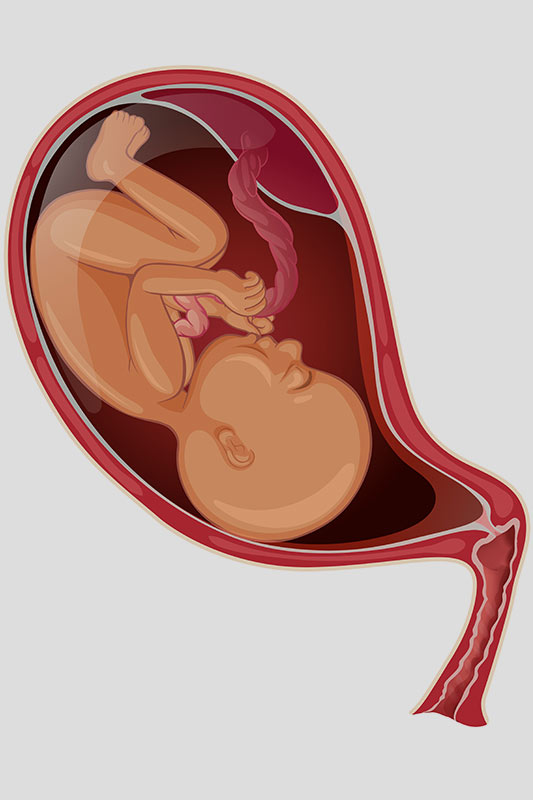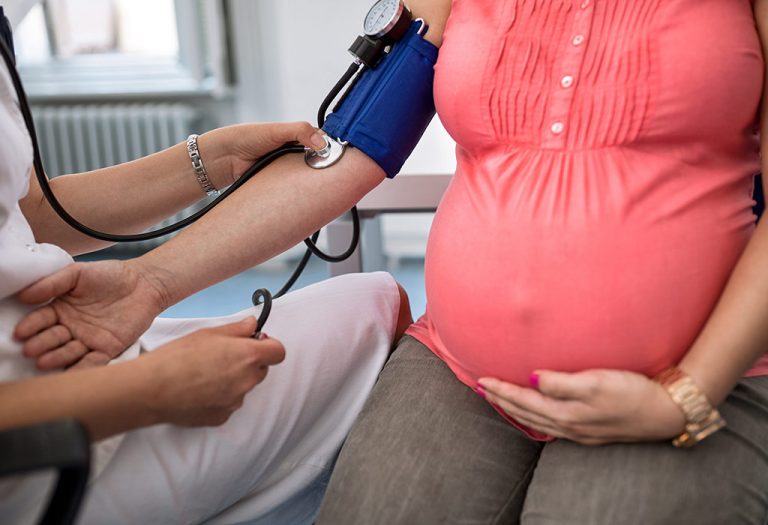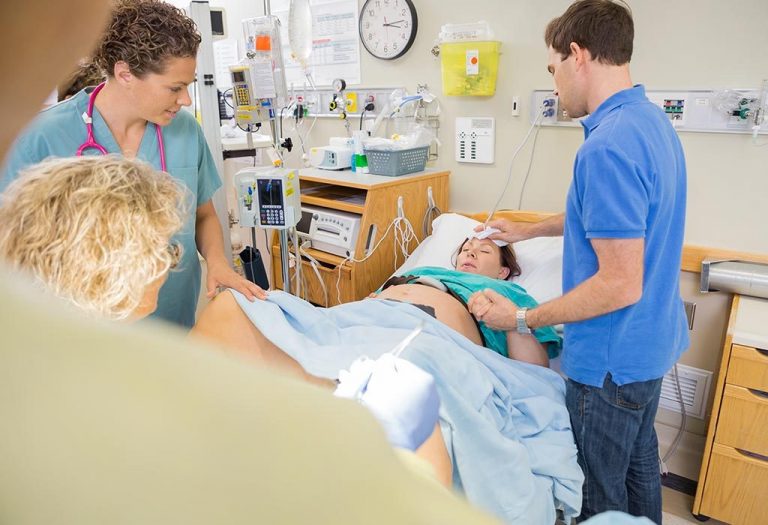10 Things You Should Know About C-Sections
While vaginal delivery is the most preferred choice for all pregnant women, it might not always be the route taken during labour. A C-section or caesarean delivery often harbours fear, curiosity, and misunderstanding. You might have even wondered if a C-section is an easier or painless option as compared to vaginal delivery. While you have plenty to know about a C-section, from videos to books, there’s always a slew of things you might not be aware of. Since a C-section is a type of surgery, we’ve asked our experts to share some unexpected truths and inside information about a C-section delivery and recovery.
But let’s look at some basics first!
What Is a C-section?
A C-section or caesarean delivery is a surgical procedure that is required when vaginal delivery is not possible or can’t be done safely, or when the health and safety of the mother and the baby is compromised. During a C-section, the baby is delivered through the incisions made on the abdominal wall and uterus of the pregnant woman (1).
When Would You Need a C-Section?
Women usually require a C-section if there are chances of complications occurring during labour in a vaginal delivery. A C-section can be planned, in which your doctor can suggest a suitable date according to your pregnancy progress. In case of medical concern, doctors might require to do an emergency C-section, which is performed when there’s a health risk to the baby or the mother, such as if the baby is in distress, the baby is in an unusual position, there’s an issue with the progress of labour, and more (2) (3).
Although a C-section is a relatively safe procedure, there are some possible complications that could arise after the procedure is done, such as infections, increased risk of respiratory distress for your baby, or complications with future pregnancies (4). It is important to know all the pros and cons before the procedure.
Things People Don’t Know About Caesarean Deliveries
Here are some things to take note of when you are about to undergo a C-section.
1. Postpartum Bleeding Will Occur Even With a C-section
Although you are going with a C-section and not a vaginal delivery, you should expect postpartum bleeding as the uterus cleans itself after the placenta is removed. It’s totally normal (5). Nonetheless, the bleeding after a C-section will be a bit less compared to that after a vaginal delivery. Do expect bleeding for several weeks, during which the colour of the blood could range from dark red to brown to yellow to white (6).
2. Post-Op Care
After the C-section, you’ll be provided post-op care and will be monitored in the recovery room for a few hours. Your caesarean will not hurt because of the anaesthesia, but you may feel a bit of a tugging sensation. You can expect to have a catheter in place until the anaesthesia subsides and you feel normal sensation in your legs to access the toilet safely. C-section recovery pain is normal but manageable with doctor-prescribed oral painkillers and anti-inflammatory medication. A support belt is also recommended after a C-section, as the abdominal muscles need support as they recover.
3. Pack That Hospital Bag Early
When you’re in the third trimester, pack that bag so you’re not scrambling. Think: nursing bras, comfy clothes, high-waisted undies, maternity pads, toiletries, and maybe a good book. For baby: diapers, wipes, swaddles, a couple of cotton onesies, a beanie/cotton cap and mittens, etc.
4. Skin-to-skin Contact With the Baby
Regardless of not giving birth vaginally, mothers can have skin-to-skin contact or kangaroo care with their babies to provide infants with necessary warmth and comfort.
5. Breastfeeding After a C-Section
If you have had an unplanned C-section delivery, your doctor may allow you more rest and recovery and be less likely to encourage you to breastfeed right after delivery. Rest assured, your C-section does not hinder your ability to breastfeed. Since a C-section is a major surgery, abdominal incision, limited mobility, and pain can add to breastfeeding difficulties (7). You may want to try favourable positions, like football hold, side-lying position, or laid-back position, for breastfeeding better (8).
If your doctor recommends more time to relax and formula feed your baby, look for one with synbiotics, which is a combination of prebiotics and probiotics.
6. What Are Synbiotics, Anyway?
Babies born via C-section don’t get exposed to the good bacteria in the vaginal canal, which can delay the growth of healthy gut microbes like Bifidobacterium and Bacteroidota (9). This might make them more prone to things like asthma, obesity, or allergies down the road (10).
Giving them synbiotics early on (especially if you’re formula-feeding) can help their gut get back on track by feeding and restoring good bacteria (11) (12).
You can look for baby formula that includes synbiotics, and additionally contains vitamins C & D, calcium, DHA and other nutrients to support healthy growth in babies up to 6 months.
7. You Might Get the Shakes and Shivers
Spinal anaesthesia (which numbs the lower half of your body) is common during a C-section, and it can make you shake or shiver uncontrollably. It’s weird but totally normal. It’s just your body reacting to the meds and temperature drop. It goes away soon after. (13). The shakes will come off as a light shiver and eventually subside as the anaesthesia wears off.
8. Worried About The Scar? Don’t be!
The incision is usually horizontal, right above your pubic area. For the first 6 weeks, just keep it clean and dry—don’t put anything on it unless your doctor says so. Incisions and stitches nowadays are a lot neater than they used to be, so it might fade with time (and a good scar cream). Either way, it is a reminder of one of the sweetest days of your life.
9. Postpartum Depression
Yes, postpartum depression or postpartum blues are real. Persistent sadness, lack of bonding with the baby, severe mood swings, and overwhelming fatigue are some symptoms of postpartum depression. The pain associated with a C-section, hormonal changes, and sleep deprivation can accelerate the chances of postpartum depression. Getting professional help, joining support groups, and talking to loved ones or professionals can help you deal with your emotional state.
10. You May Feel Swollen and Have Gas Pains
Swelling around the C-section incision, legs, arms, and hands is commonly seen after a caesarean delivery due to fluid retention and hormonal shifts in the body occurring right after birth. Postpartum swelling, also known as oedema, is normal and gradually wears off. Keep yourself hydrated, wear compression socks, and keep your feet elevated to reduce swelling.
The first few days after a C-section are indeed the most challenging, as the body goes through intense physical, emotional, and hormonal shifts. Preparing and educating yourself well, listening to your body, and accepting help when needed can help make the recovery process more manageable. Remember that every person’s pregnancy and postpartum journey is unique. Discuss any symptoms and discomfort with your doctor to make sure you’re doing what you can to make recovery smoother!
References/Resources:
1. Cleveland Clinic – C-Section
3. Tommy’s – C-sections (caesareans) – everything you need to know
4. BetterHealth Channel – Caesarean section
5. Tommy’s – Bleeding after a c-section (caesarean): what to expect
7. American Academy of Pediatrics – Breastfeeding After Cesarean (C-Section) Delivery
8. HSE – Breastfeeding after a caesarean section
Also Read:
Diet After C Section Delivery
Massage After C-section Delivery
Recovering After a C-Section Delivery
C-Section Delivery – What Are the Benefits and Risks?
Was This Article Helpful?
Parenting is a huge responsibility, for you as a caregiver, but also for us as a parenting content platform. We understand that and take our responsibility of creating credible content seriously. FirstCry Parenting articles are written and published only after extensive research using factually sound references to deliver quality content that is accurate, validated by experts, and completely reliable. To understand how we go about creating content that is credible, read our editorial policy here.






















